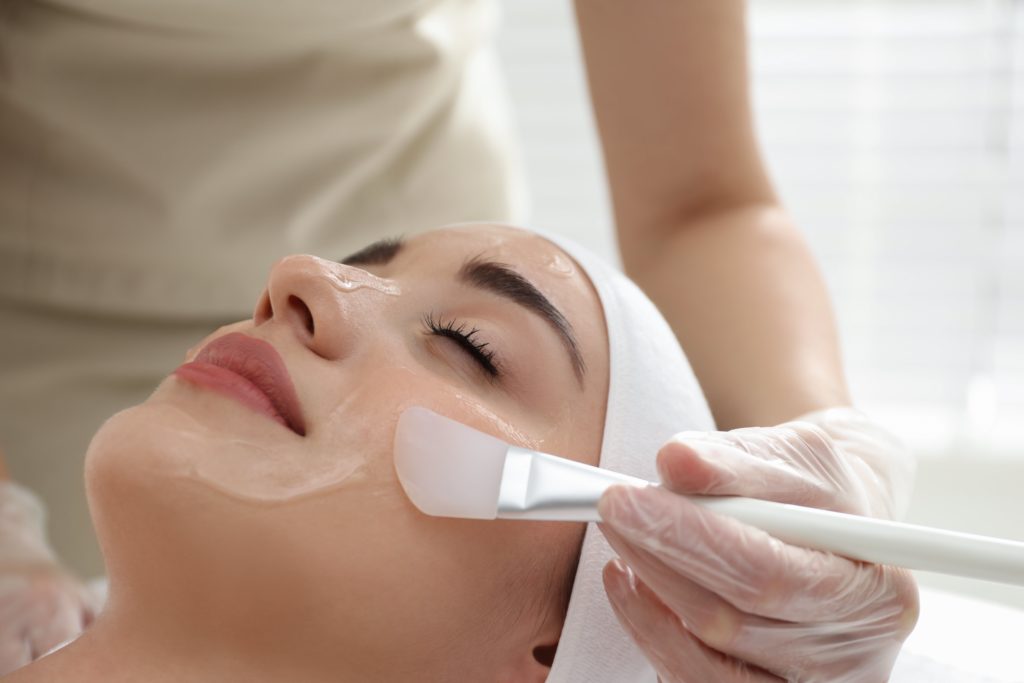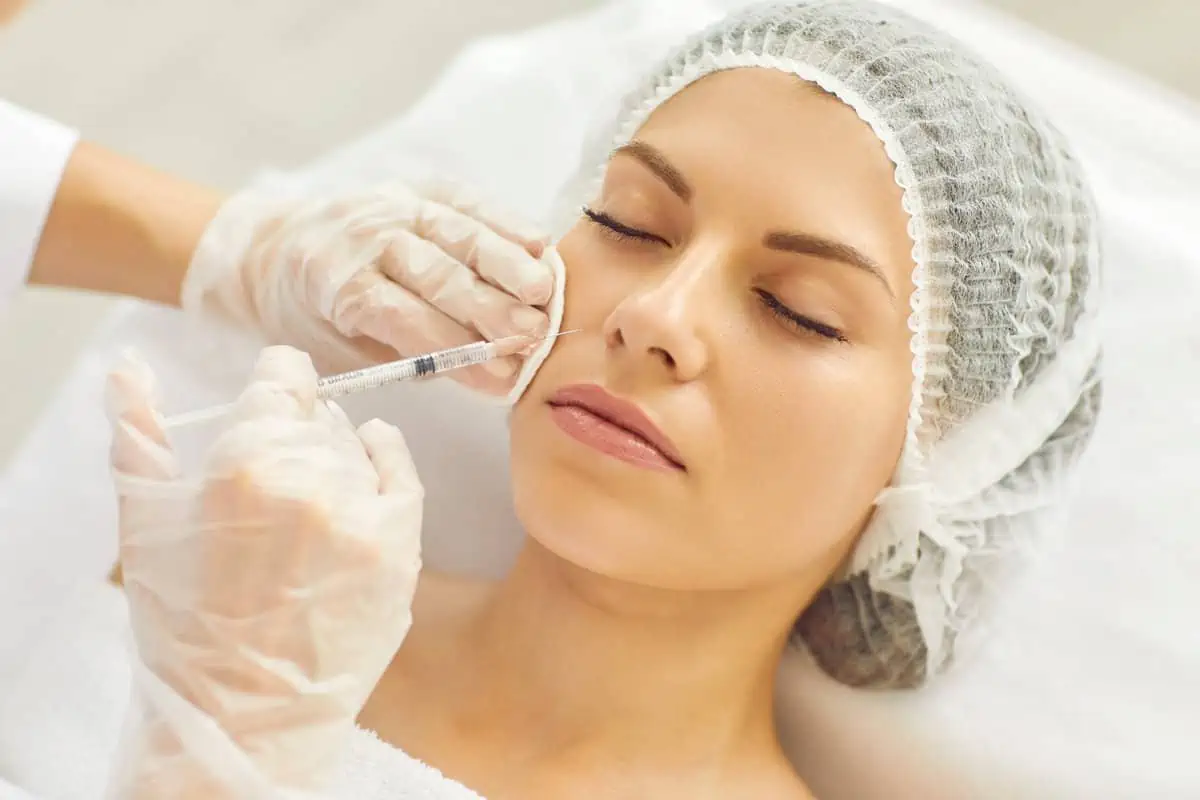A chemical peel is a popular cosmetic procedure that can improve the appearance of your skin. The treatment involves applying a solution to your skin, which causes the outer layer of dead skin cells to peel off.
Chemical peeling reveals fresh, new skin underneath and can help to reduce the appearance of fine lines, wrinkles, and other imperfections. But what exactly is in a chemical peel solution, and is it safe? In this article, we will be discussing the depths of chemical peeling and how to prepare before chemical peeling.
Depths of Chemical Peeling
Chemical peels have been a popular cosmetic treatment for decades, and for a good reason. They can improve the appearance of the skin by reducing wrinkles, fine lines, and age spots.
Superficial or Light Chemical Peel
Superficial peels are the most gentle and typically only remove the outermost layer of skin. This peel is often used to improve the appearance of mild sun damage, fine lines, and dull skin.
Superficial peels are relatively simple and quick procedures that can be done in a med spa, plastics, or dermatologist’s office. The most common superficial peel acids are glycolic acid and lactic acid.
Superficial chemical peeling usually lasts for less than 30 minutes and does not require any downtime. There is usually some mild redness and peeling for a few days after the procedure. Superficial chemical peels offer modest results and are best used in a regular skincare routine.
Medium Chemical Peel
Medium peels are slightly more aggressive and penetrate the outermost layer of skin and the middle layer, or dermis. Medium Chemical Peel is used to treat wrinkles, acne scars, and other types of scarring.
Medium chemical peels can treat various skin concerns, including fine lines and wrinkles, age spots, and acne scars. Its result is visible after just one treatment, though multiple treatments may be necessary for some individuals. No downtime is associated with the medium chemical peel procedure, but you could peel for 10-14 days, and side effects are usually minimal.
Deep Chemical Peel
Deep Chemical peels are the most intense type of peel and penetrate all three layers of skin. Deep peels are rarely used because they can cause permanent damage to the skin. However, this is recommended for severe cases of scarring or pigmentation problems.
Deep chemical peels are more aggressive than other peels and typically require more recovery time. During the procedure, the acid solution is applied to the skin and allowed to penetrate for a few minutes. The solution is then removed, and the area is treated with a neutralizing agent.
In most cases, deep chemical peels are performed under sedation or anesthesia. Unlike light and medium chemical peeling, deep chemical peeling’s recovery might take a while, and the treated area will be sensitive to sunlight during this time. Side effects may include redness, swelling, blistering, and scarring.
The main ingredient in most chemical peels is glycolic acid, a type of alpha hydroxy acid (AHA). In addition, glycolic acid has been shown to stimulate collagen production, which can help reduce wrinkles.
Chemical peels also often contain other ingredients, such as lactic acid, trichloroacetic acid (TCA), and salicylic acid. These ingredients can help to improve the results of the peel further.
How to Prepare for Chemical Peeling
If you’re considering getting a chemical peel, you should do a few things to prepare for the procedure.
Choose a Trusted Aesthetician
It’s essential to research where you should undergo chemical peeling. You can ask for referrals or recommendations from friends or family, and be sure to read online reviews. Once you’ve found a provider you trust, schedule a consultation to discuss your goals for the peel. Be honest about your expectations and ask any questions you have about the procedure.
Know Your Medical History
Knowing and reviewing your medical history with your provider is essential so your provider may know if this procedure is worth pursuing. Chemical peels might give a lot of benefits. However, it’s not always suitable for everyone.
If you have a history of keloids (raised scars) or hypertrophic scarring (thickened scars), you may not be a good candidate for a chemical peel. People with dark skin may also be at increased risk for complications from a chemical peel.
Cleanse Your Skin
It’s vital to cleanse your skin thoroughly before the peel. This will help to remove any dirt, oil, or makeup that could interfere with the process. Once your skin is clean, your provider will apply the chemical solution to your face. After applying the solution, your provider will carefully monitor your skin for any signs of irritation. The peel will then be removed, revealing fresh, new skin beneath.
Do a Physical Examination
Before undergoing a chemical peel, it is vital to have a physical examination by your doctor or a provider at Misty Med Spa & Skin Rx because certain medical conditions can increase the risks associated with the procedure. They will check for active skin infections, moles, warts, or other growths in the planned treatment area.
Sometimes, you may need to adjust your medication regimen before undergoing a peel. It is very important to tell your provider and aesthetician about all medications and supplements you take by mouth or use topically, as these may make you more prone to burn. Once your provider has cleared you for the procedure, they will select the correct type of chemical peel appropriate for your skin type.
Set Expectations
Before you have a chemical peel, your provider will assess your skin type and condition to ensure that you are suitable for the treatment. They will also discuss your expectations for the treatment and any potential risks. Following your provider’s instructions for pre and post-treatment care is essential, as this will help minimize any side effects.
After the chemical peel, your skin will be more sensitive to sunlight, so you must use sunscreen and avoid direct sun exposure. Some after-effects are swelling, redness, and peeling of the treated area, which might go on for 10-14 days.
Conclusion
Most side effects of chemical peeling are mild and temporary, such as pinkness or redness of the skin. Only a reputable dermatologist or other medical professionals at Misty Med Spa & Skin Rx can first ensure your safety while performing chemical peeling.
At Misty Med Spa & Skin Rx, they offer a variety of chemical peels to suit your individual needs. Whether you’re looking to address fine lines and wrinkles, uneven skin tone, or acne scars, they have a peel that can help. They will care for your needs and determine the best type of peel for your unique concerns.







